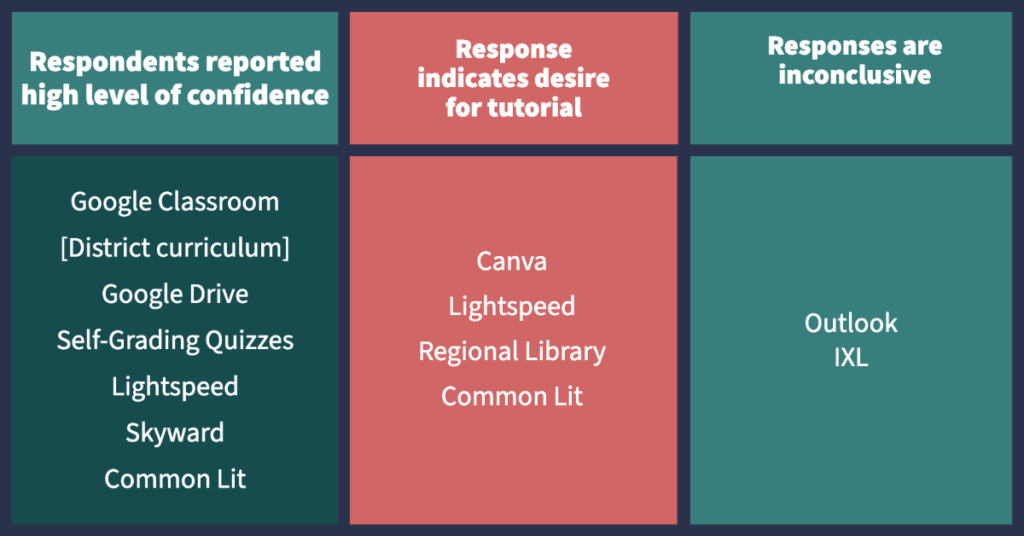The planning phase of the project can be best broken into three stages: gathering and adapting the differentiated materials, meeting with the instructional specialist, and determining department needs.
I met with the department specialist to discuss the project and brainstorm a list of needs that would be met through the project to include organizing the differentiated materials, recording tutorials in technology elements that were being underused in the department, and to develop a survey to determine need.
The Survey
An initial google survey sent via email returned responses from approximately half of the English department staff. The limitations of a digital survey administered in this manner quickly became evident: staff who did not check their email regularly or who were uncomfortable with digital tools did not respond. The manner of survey introduced unintentional bias because respondents self-selected based on comfort level with technology. So, I met with individuals I knew had not responded and surveyed them through conversation.
This combination of information gathering tools introduced the risk of a different response bias, for example respondents may have answered differently in person than they would have if their responses were truly anonymous. However, it provided the best chance of getting adequate responses from both the more tech savvy staff and the staff who are less comfortable with technology.
When asked where they preferred to access student worksheets and other materials, 87.5% of staff surveyed indicated that they preferred a shared google drive, and 62.5% used a personal drive for their materials. The remaining options garnered 50% of the responses or fewer, so I decided to establish and organize a shared google drive then populate it with my differentiated materials. The benefit of a shared google drive is that teachers could adapt and add their materials to the drive so it could grow and change over time.

An open ended question regarding the type of materials teachers wanted to access in the drive returned an array of responses with the most popular being differentiated versions of the district’s standardized curriculum. The remaining responses included several existing materials that needed to be organized. These included: digitized non-handout assignments from the district’s curriculum, printable student handouts, graphic organizers, small group work, extension activities, and reading intervention materials. Other responses did not exist, or were outside the scope of the project: these included full lesson plans and self-checking tools. These responses were useful for planning future projects.

The survey used a Likert scale to determine the respondent’s level of interest in various topics that the instructional specialist and I brainstormed. A majority of the respondents indicated a high level of comfort and expertise in several areas, while a significantly smaller number reported a desire to learn more about other areas. Because these responses are indicative of confidence, rather than observed expertise, it is possible that there may be some areas in which tutorials would be helpful that are not indicated in the survey.

The responses to the digital survey and interviews provided information to shape the structure and organization of this project. it served as a useful initial step.